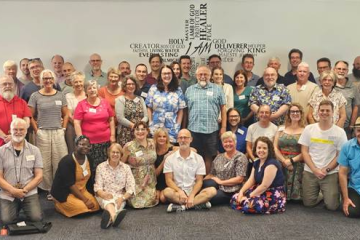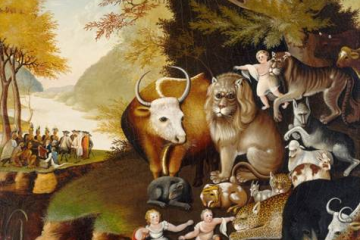ACTS 2:1-36
Every life that is born yearns for life. When a child is born their senses awaken, the child opens its eyes and sees light, it begins to breathe, and feels the air, it cries and hears sounds. It lies beside its mother or father and feels the warmth of their touch. And the child flourishes. The life that we say has been ‘born anew’ from God’s eternal Spirit is similar, and beckons us to a deep place that transforms our being. The beating heart experiences love and acceptance and that love is warmed into love for life. It is an experience that is like breathing new air about which John Wesley wrote ‘God breathes unceasingly in the soul and the soul breathes unceasingly unto God’. That is the gift of the Spirit. Life in its flourishing fullness nurtured and embedded in the most profound experience of God.
Today as mentioned is Pentecost, the day we celebrate the giving of the Spirit, at least according to the writer of Acts. I don’t know about you but I have wrestled with understanding the whole nature of this day and the whole theological breadth of the giving of the spirit. Other than just what I said, which I wholeheartedly believe, I know I fall short of it, and I know (and I wonder if this is true for you), that it is a concept so deep that I just park it in the realm of mystery. But what is clear doctrine in terms of the Spirit that has been embraced by the church over the years is that faith is deeply intertwined with the concept of the spirit such that as the theologian Moltmann describes ‘it is not faith that makes Jesus the Christ, but rather Jesus as the Christ who creates faith. It is not hope that makes the future into God’s future rather is it this future that awakens hope’. And all of this is due to the presence of God manifest in and through the Spirit. It is the Spirit that makes the experience of Jesus real, it is the Spirit that unites us and it is the Spirit that leads us into the truth and freedom so mapped by Jesus and so part of the salvation plan of God. And ,therefore, the Spirit boldly forms the glue that links Jesus to us, and helps we the church to begin to frame the picture of the future – history and eschatology are intertwined and deeply seen as nothing other than the work of the Spirit.
But what we should try to avoid is a kind of syncronistic and homogenised picture of the Spirit because the New Testament picture is far more nuanced and varied than we tend to think about. We tend to be guided by the understanding of the Spirit as given in Acts as the uniform model and picture of the beginning of the Church, that it was actually during the celebration of the Jewish Pentecost in Jerusalem that the Spirit enveloped them, whereas in Matthew and Mark it’s not really on the radar, for Paul the spirit is given upon confession (Rom 8.9) and something similar in the Gospel of John where in John 20.22 the risen Jesus breathes the Spirit to the gathered disciples and so the Spirit or Paraclete is available to those open to it. There is in the NT in general therefore no specific occasion of launching the church.
But there is in Acts, and what I suggest is the better Biblical reading of the story is to listen and to understand what the writer is trying to say and what is the deep theology in his picture of the Spirit. Historically of course, the writer has the giving of the Spirit anchored around a Jewish festival; one of three major festivals in the Jewish calendar. It was sometimes called the festival of weeks (since it was celebrated seven complete weeks, or 50 days, after the Passover, hence the Greek derivation), sometimes called the feast of Harvest (because it included the harvest of the later grains) and sometimes called the day of first fruits (because the first loaves made from the new grain were offered to the altar. So, it was a festival of agricultural significance but also theological importance because it commemorated the deliverance of the Jewish people from slavery a day that remembered the formation of their identity as the select chosen of God. So, the writer is using this Jewish event Pentecost and transforming it to highlight the launching of the new identity of the church of Jesus Christ. But why? To what end?
To unite the people to the faith!
On the morning of Pentecost, we read that the faithful had all gathered together and that suddenly a wind filled the room, symbolising the Spirit. OT imagery vibrates throughout the scene – first from Ezekiel with powerful reference to God as ruach or breathe. When Ezekiel, by divine command, prophesied to the wind and called it to blow over the dead bodies in the valley of his vision, it was the breathe of God that breathed over them and filled them with new life (Ez. 37:9-14). At Pentecost, after the death of Jesus, the writer would have us know that here the disciples were touched with the living power of God, the same breathe that filled the dry and dead bones. The disciples became filled with new life, new motivation, new energy, new reason, new born with the breathe of God.
They spoke different languages so all could hear and understand! Further symbolism of the new unity that springs from the message of the gospel that was to reach Jews of the diaspora. The image and devastation of Babel – OT image of scattering – is reversed. All Jews could unite in Jesus.
There’s further imagery from the OT – Joel 2 – that is carefully threaded into the story and Peter is the herald that announces the long awaited dream of salvation and deliverance that through the power of the Spirit, Jesus is the one they longed for, the one who was to gather restore and unite all in the faith. Unity is again the call!
All were amazed we learn … but it was not an ecstatic commotion of wildly inebriated people, it wasn’t over the top stuff, rather here the spirit lead them to something other … the rabble who gathered for the Festival became a community … And it all derives from the power of the Spirit. Here it not what the Western Church’s Nicene Creed maintains; here the Spirit does not proceed from the Father and the Son; here the Spirit proceeds from the Father rests on the Son and from the Son, radiates into the world to unite all in the faith. Verse 44 says it neatly ‘the people gathered together and shared all things in common. No differentiation. The problem of racism, sexism, indivdualism, nationalism, classism, division, discrimination – overcome. They become bonded to each other, they celebrated each other, they communed with each other … united to each other.
There is an American Indian tale about two men, one older the other younger and they were sitting by the fire. When they had eaten, the older man held up a piece of wood and asked “What’s this?” The younger man said, “A piece of wood”. The old man looked disgruntled: he put down the stick and was silent. The younger man said again: “Its wood, a piece of tree”. The old man brightened up, “That’s better he said. But now think of the tree. When you can see each leaf as a something bound, something connected then you will begin to see the tree; when you can see the tree, you can see the spirit of the tree, and maybe learn something from it.”
The Church empowered by the Spirit at Pentecost is one that is connected and which gathers and leads to true and genuine community. People belong; they are one. People are connected – bound together. There should be no-one isolated left out or alone. All are part of the tree! That is the picture of the Pentecost Church. When people have told you that the spirit has directed them to go a certain way which does not lead to the building of community or is disjointed or disconnected from you then be suspicious.
And so what can we take from this amazing Biblical story: one – Pentecost summons us … to hear the good news, to let the spirit breathe new life, new motivation new energy new reason into our collective church bones, Pentecost summons us to let the spirit move among us to inspire freshness and vigour into our church life so that we can become an impassioned community of God.
Two – Pentecost calls us to be united to cast aside the discontent, to put away the criticism that mars all creative thought and good will.
And three – Pentecost invites us to open ourselves to the leading of the Spirit … it invites us to be open to new possibilities, to born anew, to embark on a journey in the celebration of life in its flourishing fullness nurtured and embedded in the most profound experience of God empowered every day in the Spirit of God, to the glory of God. Amen


